Complete Guide to
Multi-family Lighting
Everything you need to know about LED lighting maintenance, what to buy, and how to save on energy costs
GETTING STARTED
How would you like this review about your multifamily building?
“The parking lot is dark and scary at night. Not to mention the dingy laundry room. I don’t know how anyone thinks their clothes are clean after going in there!”
Probably not what you’re looking for. There is one key component that could help you reverse reviews like that and attract and maintain tenants: your lighting. And that’s good for your business.
Whether your multifamily property is an apartment building or senior living, lighting can transform how your residents feel, interact, and live.
Common types of lighting for multi-family buildings
With so many lighting options in the market today, it can be overwhelming trying to make the best decision and find the right products.
We have a list of common light bulbs you most likely need and the best LED replacement. But first, we want to explain two lighting metrics that may help in your decision-making process.
- CRI or Color Rendering Index: A number between 0 and 100 that is used to predict how well a product renders color. The closer to 100, the better – or truer – colors should look under its light. For multifamily buildings, you want to make sure you have a higher CRI in business center areas. If you’re a senior living facility, a high CRI is also very important. In other areas like laundry rooms, a high CRI might not be as important.
- CCT or correlated color temperature: A gauge of how yellow or blue the color of light emitted from a light bulb appears. It’s measured in the Kelvin unit (K) and is commonly found between 2400 K and 6500 K. When potential residents walk into your leasing office, you might want to create a warm, welcoming atmosphere that feels like home. In that case, you probably want a CCT between 2700 and 3500K, with more yellow or orange light. This is also a good range for units or apartments. However, if you have an office or laundry room on your property, a cool color temperature might be better. In that case, you want to go with a CCT between 3000 and 4000K, or more blue light.
| APPLICATION | RECOMMENDED COLOR TEMPURATURE |
|---|---|
| Lobbies, offices | Similar to retail, multi-family lighting can vary significantly based on the brand, atmosphere, and location. That said, wamer color temperatures in the 1800K-3000K range work well in lobbies. |
| Hallways and common areas | In general, match the color temperature color of hallways and common areas to the lobby. |
| Rooms | Rooms typically fall in the 2700K-3000K range, creating a warm, inviting atmosphere. |
To simplify your maintenance purchases, we’re listing below the most common types of light bulbs found in schools and universities, plus the LED equivalent. You can shop for them in our online store. Click here to register for a business account and get discounted pricing for your building.
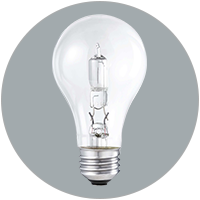 |
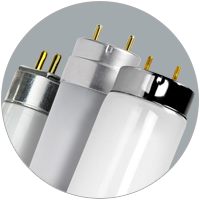 |
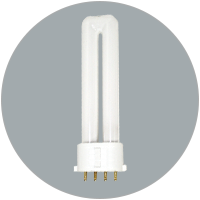 |
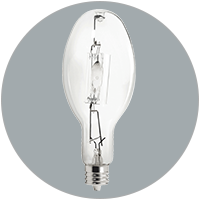 |
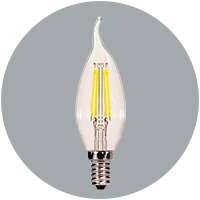 |
|---|---|---|---|---|
| Standard Light Bulb | Linear Fluorescent | Compact Fluorescent | HID | Accent Light Bulbs |
| Found in: units, bathrooms, leasing office | Found in: hallways, laundry rooms, parking garages | Found in: recessed cans, lobbies, units | Found in: parking lots or parking garages | Found in: units, leasing office |
As you replace your light bulbs – don’t forget to recycle them properly. Fluorescent light bulbs contain mercury and can’t be thrown in a landfill. Regency Lighting is a one-stop lighting and electronic recycling provider, allowing you to safely get rid of materials like lamps, ballasts, thermostats, exit signs, and electronics.
Maintenance tips for multi-family buildings
First impressions are key for multifamily buildings, and a bad maintenance plan can lead to bad first impressions (or bad reviews). The last thing you want is to be on a ladder when new or potential clients walk into the leasing office or tour units.
And what if your lighting is all different colors or there are dark spots around the property? Bad or inconsistent lighting sends a signal that maintenance is not a priority. If maintenance is not a priority, potential renters might wonder about other problems with the property.
Here’s the best approach when it comes to maintenance: take care of the hard places first.
If you’re struggling with this, you need a strategy. We have three ways to cut the time and materials you spend on lighting maintenance:
Prioritize hard-to-maintain areas: This should be the first step in your maintenance plan. Most likely, hard-to-maintain areas are also areas where safety is critical, like parking lots or garages and high-ceiling areas like in leasing offices.
Group relamping: This is a “work smarter, not harder” approach that prioritizes efficiency over speed. Rather than climbing ladders multiple times a month to swap out burnt-out light bulbs, take care of certain areas in one fell swoop. Are there down times on your property? That might be a good time to change out your light bulbs. This is especially effective if you’re dealing with high, hard-to-reach fixtures or busy areas.
Schedule maintenance: Work with a provider or schedule out your maintenance on a calendar. The idea here is to maintain your lighting like you would your car. If you don’t maintain good air pressure in your tires or change your oil regularly, you will experience a blowout or break down at the worst possible time. And if you don’t schedule out your lighting maintenance, you may experience an outage just before the district manager arrives to check on the property.
You most likely have HID light bulbs in your parking lots and parking garages, or fluorescents in common areas. HIDs and fluorescents run off a ballast, so it’s also a good idea to keep stock of a few ballasts. Or if you’re ready to switch to LEDs, we’ve explored your options here.
Managing energy costs for multi-family buildings
Are energy costs eating up a huge part of your overall budget? Lighting is expensive, especially when you have several areas where lights need to be on 24/7.
We like to explain how much energy different types of light bulbs use on the lighting pyramid. Incandescent lights and fluorescent lights are most commonly found in multifamily buildings, and incandescent is at the bottom of the pyramid, meaning it uses the most energy.
The easiest way to save on energy costs is to upgrade to LEDs, or to move up the pyramid.
If upgrading is not an option, focus on areas where burn time is extremely high. Lobbies or other areas where you might use incandescent or halogen light bulbs are likely not going to be on all day every day. You might get more bang for your buck by focusing on replacing fluorescent and HID light bulbs with LEDs, likely in stairwells and parking garages.
A high-rise apartment building in Atlanta came to us when they realized their lighting was using too much energy. The building, called 77 12th, decided to move forward with a series of lighting retrofit projects throughout the building.

77 12th wanted to focus on five high-burn areas – three common areas, the parking garage, and the stairwells. By retrofitting a total of 1,665 fixtures with LEDs, energy costs dropped. The building saved more than $19,000 in its first year. The full project payback? Eight months.
Managing energy costs through lighting controls
Another way to control energy costs is by implementing lighting controls. A controls system can give you the flexibility you want, while also reducing usage.
Lighting control systems can be as simple or as complicated as you would like.
Here are a few basic options:
Dimmers: Dimming light bulbs reduces wattage and output, resulting in energy savings. This can also help set different tones in business rooms or main lobbies.
Sensors: No one wants to light an empty room – so installing occupancy sensors in a laundry room that might have different peak times is an easy place to start. Or it could be tedious to turn on parking lot lights every night, so photosensor controls could be a huge advantage. Motion sensors are very useful for security lighting. They turn on when motion is detected, then turn off a short while later.
Timers: Lobby or common areas might only be used during the day. Timers can shut off lights at a certain time, like when your last employee heads home for the day.
Attracting new residents to multi-family buildings
If you’d ask your boss about your top priority, the response would probably be attracting and keeping residents. There are an overwhelming number of options today for tenants. In fact, more than 40 million Americans live in rental housing. How does your building differentiate itself?
Quality lighting can be a huge asset. There are several ways you can use lighting as a selling point for your property:
-
Green initiatives. Going green by installing LEDs, lighting controls, or both is an effective way to draw younger generations. The same crowd is most likely interested in overall energy savings and water conservation.
-
Use lighting as a focal point. Want to make a statement in your leasing office lobby? Lighting can give that ‘wow’ factor as soon as someone walks into your main building. That’s what our lighting design accomplished at The Crossing in Anaheim, CA. The lighting enhances the interior design, creating a space that any potential tenant would be proud to call home.

- Enhancing quality of life. Especially as we age, lighting is a key component to our everyday life. Using lighting with a high CRI in retirement communities, assisted living, or nursing homes. Some elderly residents may not be able to get outside as much, but you can create an indoor atmosphere that closely matches sunlight with lighting.
Lighting safety and building codes
One of the first things people assess when they walk onto your property is, “Do I feel safe here?”
Lighting can be a huge contributor to safety. As a basic safety practice, make sure hallways, stairs, floors, and ramps all around the property and buildings are properly lit. This is especially important to meet ADA requirements.
Here are two specific safety approaches for multifamily buildings:
- Well-lit parking lots or parking garages. This is critical for safety. At most multifamily buildings, residents park their cars in a parking garage or parking lot. Or they get off the bus or train and walk to their building. If they don’t feel safe, that’s reason to either move out or not sign a lease in the first place.
- Easy-to-see exterior lighting. Quality lighting outside buildings will help people see where they’re going at night. Dimly lit signs can cause confusion, especially for visitors.
Title 24 and multifamily buildings
Some multifamily buildings in California also have to meet Title 24 standards. Title 24 applies to new construction and building renovations. It’s triggered any time you pull a building permit, and it significantly impacts lighting and lighting controls.
LEED certification for multifamily
Another consideration for new buildings today is LEED certification. The U.S. Green Building Council developed LEED, or Leadership in Energy and Environmental Design. It’s a green building rating system that businesses across the world have adopted, designed to save energy, water, and money.
Lighting controls and LEDs can help achieve a LEED certification. This is also a factor you can use to attract more tenants. As we mentioned above, green initiatives and sustainability are a huge draw for younger generations.
Where to start with LED retrofits
It’s no secret – switching to LEDs can save you money long-term. But we get it, the upfront cost can be a deterrent.
Switching to LED doesn’t have to be an all-at-once commitment. You can start small and work your way up.
If you’re going to retrofit your multifamily building in small steps, you probably want to take an approach similar to maintenance. Target the hardest to maintain areas first.
- Parking lots and parking garage
Switching to LEDs in your parking lot or garage can provide brighter, more even lighting. That means you also get a safety upgrade with your LED upgrade. Plus, you will likely use the bucket truck a little less often. - Hallways and stairwells
Changing out light bulbs in hallways or stairwells is distracting and a safety hazard. These light bulbs are most likely turned “on” for the longest time throughout the day. Upgrading to LED here can mean instant savings and less maintenance. - Common areas
This is an area where inconvenient maintenance can disrupt events. Common areas can include laundry rooms, meeting rooms, or gyms on your property. You might also want to think about timing these upgrades strategically with downtimes.
Another decision to consider before you dive into the land of LEDs: should you retrofit with LED bulbs, or do all fixtures need to be replaced? Here’s a look at pros and cons.
LED fixture replacement retrofit pros:
- Maximum control over light output and placement (great for situations where lighting design is paramount)
- Longer life rating and efficacy than LED replacement lamps
- Lower maximum fixture wattage than traditional fixtures, which is advantageous for meeting strict building codes or Title 24 standards
- Excellent performance for controls and dimming
LED fixture replacement retrofit cons:
- Longer, more expensive installation
- Higher up-front cost than LED replacement lamps
- Potential for difficulty in upgrading to future emerging technologies
Because LEDs are now more reliable and efficient – and manufacturers are lowering prices – it’s costing you to wait to retrofit to LEDs.
Maybe you want to use the lighting inventory you already have before you upgrade to LED. Depending on the price, you might save money by upgrading to LED even if you don’t use whatever you have in those boxes. We explain more in this article, and you can download the calculator to get your custom payback here.
FAQ: Common lighting questions for multi-family buildings
Should I worry about wattage?
Wattage is the measure of how much energy a lamp needs to light up. This will differ based on the application, and what type of light bulb you are using. If you’re using LEDs, your wattage will probably be lower, which means less energy and more savings.
Why do lumens matter?
This measurement expresses the overall light output or quantity of light produced. More lumens means it’s a brighter light, less lumens means it’s a dimmer light. This may be an important factor as you decide how to set the ambiance of different rooms on your property. Laundry rooms might require different amounts of light than exercise rooms.
If I upgrade to LED, will the colors be consistent?
Color consistency is a big concern, especially when you are thinking about first impressions and overall quality. It’s a problem that can surface immediately or as you replace bulbs over time. Your first option is to buy from a reputable manufacturer with a tight color consistency policy. The second option is a more advanced option called color tuning.
What is lamp life and how does it compare to rated life?
Average rated life is an average rating, in hours, indicating when 50 percent of a large group of lamps has failed. This is commonly used with incandescent or halogen light bulbs.
Lamp life is the expected operating time. Most, but not all, lamps will meet the lamp life hours. This is generally used with LED light bulbs, but see the next FAQ for more detail.
How long do LED lamps and fixtures last?
LEDs are not like traditional light bulbs, where one day they will suddenly not turn on. You may notice they’re not as bright when they start to lose their life, but before they stop completely. The actual lifespan depends on the application of the lamp and the fixture.
Will dimming lights cause them to flicker?
Dimming lights is becoming a more common approach to setting a specific atmosphere in area like leasing offices. If you are trying to dim lights, make sure you buy a compatible dimmer switch. If you’re trying to dim LEDs, the technology today is better, but you could still run into problems. We look at common issues here.
Lighting can be complicated, but we try to make it easier.
Still have questions?
Bottom line: there is never a one-size-fits-all approach to lighting. We hope you found the answers you were looking for on commercial office lighting.
But if you have still have more questions – we’re happy to help you walk through the process.
